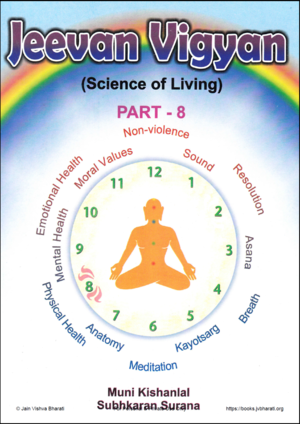Our body is like a machine. We need power to make machines work. Machines get power from oil, petrol, electricity, steam etc. Some machines are animal driven. Some are men driven. Man would be able to drive a machine only if he possesses adequate power to do it. Man receives this power from his diet, the daily food that he eats. What type of diet gives how much energy, is a question which has been the subject of profound thinking by learned persons. They have also specified how much energy is consumed in executing different type of jobs. Therefore, on this basis different kinds of diets have been suggested for different groups of people.
Diet that fulfills all the dietary requirements of our body is called balanced diet.
From this point of view, inclusion of following elements in our diet is considered as essential:
- Starch from grain based food articles.
- Proteins and fats from milk and milk products.
- Minerals, salts and vitamins from green leafy and other vegetables, fruits etc.
- Carbohydrates from pulses, lentils (green and black lentil), gram, peas etc.
The ration and proportion of these elements keep on increasing and decreasing in our food intake. Accordingly, the amount of energy received from our food also varies. Scientists have termed unit of this energy in CALORIE. They have also discovered that calorie consumption goes on uninterrupted in whatever state the body may be at rest or at work. Following are some of the examples of expenditure of categories per hour:
SERIAL NO. | STAGE OF BODY | CALORIE EXPENDITURE |
1 | Sleeping | 60 |
2 | Sitting | 70 |
3 | Standing | 100 |
4 | Walking | 200 |
5 | Swimming | 500 |
6 | Running | 600 |
Furthermore it has also been discovered as to how many calories are expected in different professional activity
SERIAL NO. | PROFESSION | DAILY CALORIE REQUIREMENT |
1 | Students, Clerk, Typist etc. (sedentary work) | 2200 to 2500 |
2 | Blacksmith, diggers etc. (Physical work) |
Approx, 3000 |
3 | Labourers engaged in works involving hard physical labour | Approx, 8000 |
We have also learnt the ratio proportion of various dietary articles goes up and down therefore energy derived from them also goes up and down accordingly.
On this basis we can discuss that:
- If we take a diet involving 8000 calories but our work needs only 2200 calories (i.e. the work of an office clerk), what would be our condition?
- If we are engaged in a work that needs 8000 calories of energy for execution, and if our food intake gives us merely 2000 calories, what would be the condition of our body?
In the first instance intake of calories is more than the energy needed; result-the body would gain fat.
In the second instance, calorie requirement is more than the calories derived from the food intake; result—the body will become weaker and weaker.
Both these situations are injurious to body. What kind of food gives more energy? What kind of food gives less energy? Which vitamin can be obtained from which kind of food? All these facts are worth knowing, though it is difficult to keep a daily record of them. We, therefore, should simply remember that our calorie intake should be in proportion to our energy expense. This balancing of calorie intake and energy expense would ensure that our body remains symmetrically healthy and energetic. We would neither be too thin nor too fat. With the help of a symmetrically healthy and energetic body, we would be able to perform Aasanas, Pranayama, Dhyan and all other daily functions. We would remain healthy and live for a long time. We must, therefore, discuss what sort of diet one must take and what type of food one must avoid.
EXERCISE
- What are the materials required for a balanced diet?
- How many calories per hour do we need while sleeping, sitting, standing, walking, running and swimming?
- How many calories does a blacksmith require everyday?
- People who do not do much physical labour require less calorie-energy. Why?
